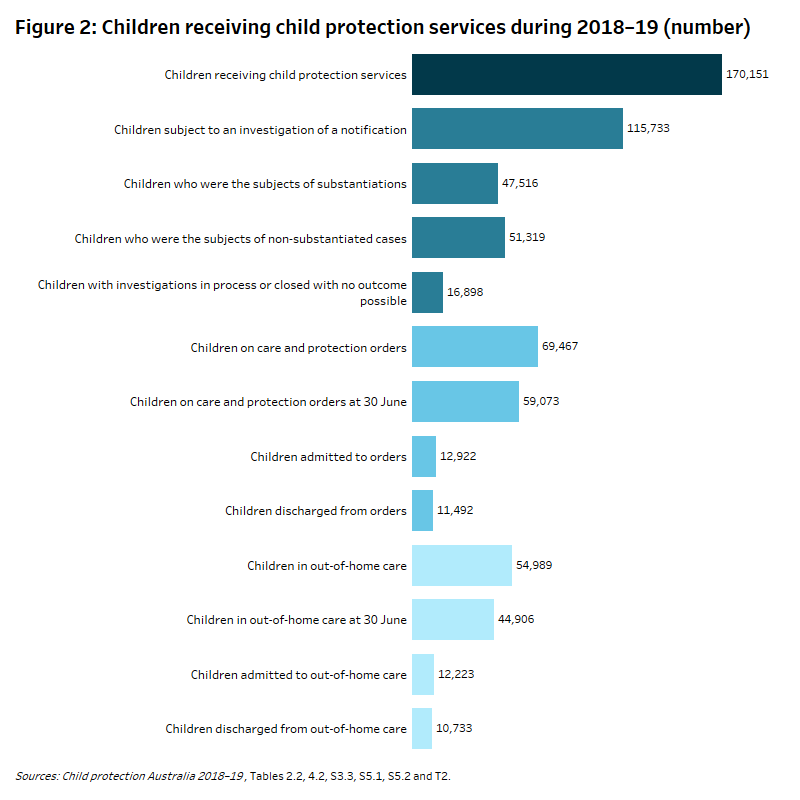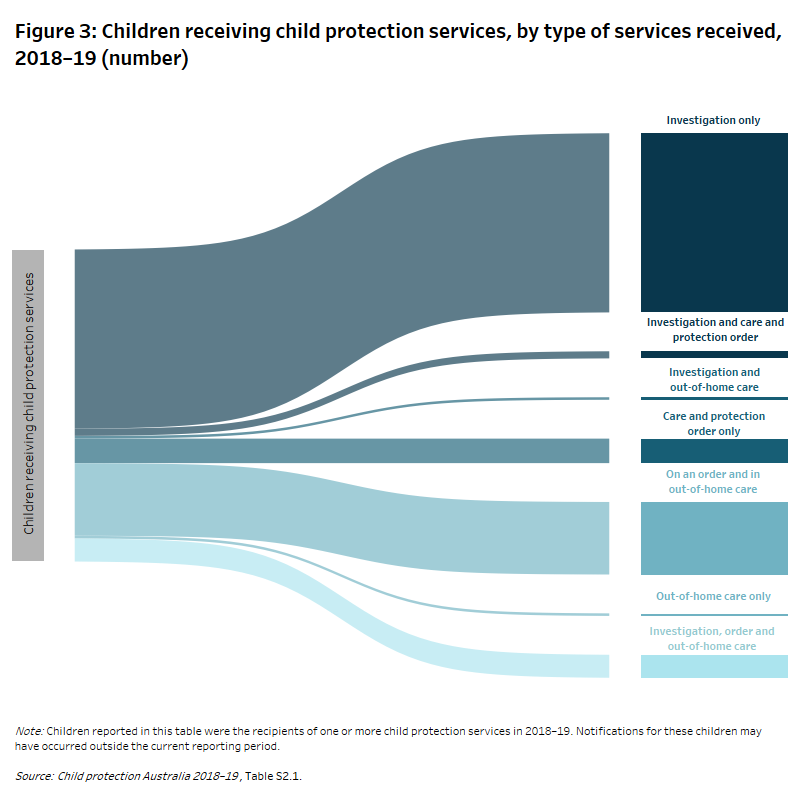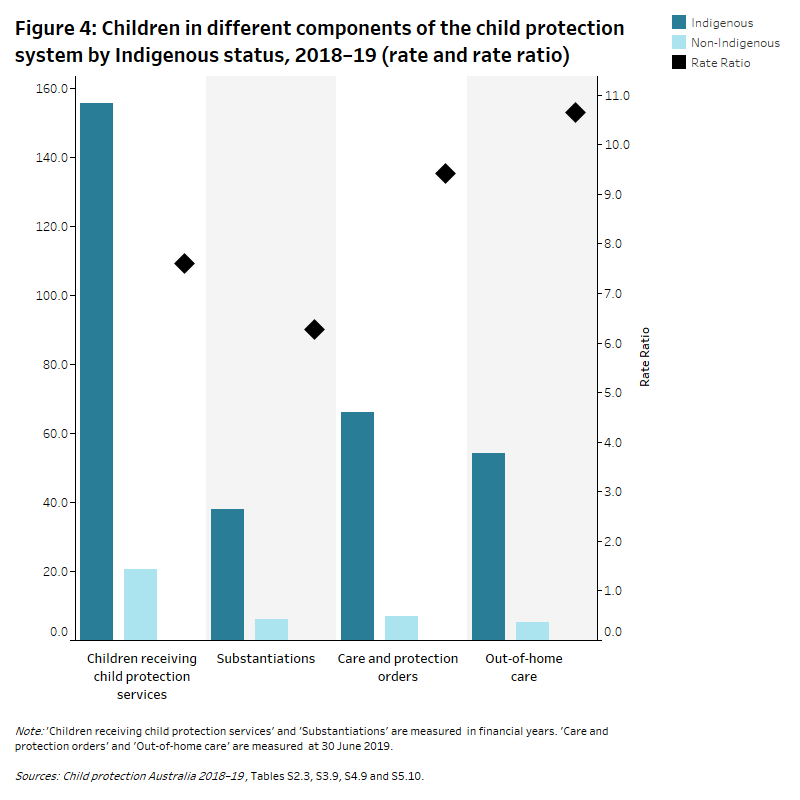Children receiving child protection services
In 2018–19, 170,200 children received child protection services (investigation, care and protection order and/or in out-of-home care) at a rate of 30 per 1,000 children.
Of the children receiving child protection services in 2018–19, 115,700 were the subject of an investigation (21 per 1,000), 69,500 were on a care and protection order (12 per 1,000) and 55,000 were in out-of-home care (10 per 1,000) (Figure 2).

Children may receive a combination of child protection services meaning that links and overlaps exist between the data collections for notification, investigation and substantiation; care and protection orders; and out-of-home care.
Over half (58%) of children receiving child protection services during 2018–19 were subject to an investigation only (that is, they were not subsequently placed on a care and protection order or in out-of-home care). This reflects investigation outcomes, where there are a greater number of cases do not meet the threshold of harm and are not substantiated. Only 7% of children were involved in all 3 components of the system (Figure 3).

Indigenous children are over-represented across the child protection system (Figure 4), with Indigenous children being almost 8 times as likely as non–Indigenous children to be receiving child protection services. More specifically, Indigenous children were 6 times as likely to be the subject of substantiated abuse or neglect, around 9 times as likely to be on a care and protection order at June 30 and 11 times as likely to be in out-of-home care when compared to non-Indigenous children.

New and repeat clients
Examining client data provides some insight into whether child protection services are primarily received by children who come into contact with the child protection system for the first time, or those with prior involvement, and whether this differs across the components of the system.
In 2018–19, almost three-quarters (68%) of children receiving services were repeat clients (Figure 5). However, the proportion of repeat clients was substantially higher for those on care and protection orders (94%) and in out-of-home care (94%), while the difference was less pronounced for children in investigations (47% new clients and 53% repeat).



